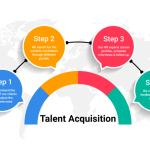Effective medical billing and coding are integral to running an efficient Obstetrics and Gynecology (OBGYN) practice. When done correctly, healthcare providers receive accurate reimbursement for their services which results in financial security and improved patient care. This comprehensive guide will explore seven essential tips for OBGYN medical billing and coding best practices, incorporating the latest updates and additional insights to help professionals optimize their revenue cycle and streamline their operations.
Table of Contents
Key Components of OBGYN Medical Billing:
Coding and Documentation:
Accurate coding is fundamental in OBGYN medical billing. Properly assigning Current Procedural Terminology (CPT) and International Classification of Diseases (ICD) codes is essential for billing and reimbursement. This requires meticulous documentation of the services provided, including examinations, procedures, and any complications.
Insurance Verification:
Navigatingnike ispa 270
black friday wig sale
cheap nba jerseys
adidas yeezy boost 350 v2 mono ice
air max 95 sale
best wigs
custom hockey jerseys
custom baseball jerseys
custom paintball jerseys
durex intense vibrations ring
custom football jerseys
dallas cowboys slippers mens
jordan air force 1
nike air max sale outlet
nike air max sale outlet
the intricacies of insurance coverage is a crucial aspect of OBGYN medical billing. Billing professionals must verify patients’ insurance eligibility, determine coverage for specific services, and understand pre-authorization requirements to avoid claim denials.
Claims Submission and Follow-up:
Submitting claims promptly and accurately is vital for OBGYN practices. Timely submission reduces the risk of claim denials and ensures a steady cash flow. Following up on submitted claims, addressing any rejections or discrepancies, and appealing denied claims are critical steps in the reimbursement process.
Challenges in OBGYN Medical Billing
Compliance and Regulations:
OBGYN billing must comply with numerous federal and state regulations, including coding, documentation, and privacy (HIPAA). Staying abreast of these regulations is essential to avoid legal issues and financial penalties.
Complex Reimbursement Structures:
The reimbursement landscape for OBGYN services is intricate, with varying payment structures for prenatal care, deliveries, surgeries, and other procedures. Billing professionals must understand the nuances of reimbursement rates from different payers to optimize revenue.
Stay Informed About Coding Updates
- Subscribe to coding newsletters and journals for real-time updates.
- Engage in online forums and communities to discuss coding challenges and solutions.
Keeping abreast of the latest Current Procedural Terminology (CPT) and International Classification of Diseases (ICD) coding changes is paramount for OBGYN professionals. Regularly check for updates from reputable sources, attend coding seminars, and engage in continuous education to ensure accurate coding and compliance with industry standards.
Document Thoroughly and Accurately
- Implement standardized templates for patient records to ensure consistency.
- Encourage healthcare providers to participate in ongoing documentation training.
Accurate medical documentation is the foundation of successful OB GYN Billing and Coding. Providers should ensure that patient records include detailed information about procedures performed, diagnoses made, and the medical necessity of each service. Clear and comprehensive documentation supports proper coding and facilitates effective communication with payers.
Understand Payer Guidelines
- Establish a dedicated team member responsible for monitoring and interpreting payer guidelines.
- Regularly communicate with payer representatives to address any queries or concerns.
Different insurance payers may have varying guidelines and policies for OBGYN billing and coding. Familiarize yourself with the specific requirements of significant payers to avoid claim denials and delays in reimbursement. This includes understanding pre authorization processes, documentation requirements, and any unique coding rules associated with specific procedures.
Implement Efficient Revenue Cycle Management (RCM)
- Utilize key performance indicators to benchmark and continuously improve RCM efficiency.
- Invest in automation tools for tasks such as eligibility verification and claims processing.
Efficient revenue cycle management is crucial for OBGYN practices to optimize cash flow. Develop streamlined patient registration, charge capture, claims submission, and accounts receivable management processes. Regularly monitor key performance indicators, such as days in accounts receivable and denial rates, to promptly identify and address potential issues.
Conduct Regular Audits
- Perform both internal and external audits to ensure compliance with industry standards.
- Create a corrective action plan based on audit findings to address any identified issues.
Regular internal audits can help identify coding errors, compliance issues, and areas for improvement in OBGYN billing and coding processes. Implementing routine audits ensures that the practice remains compliant with industry regulations and minimizes the risk of audits from external entities. Address any identified issues promptly to prevent potential financial losses.
Utilize Technology Solutions
- Explore artificial intelligence (AI) tools for automated coding suggestions and error detection.
- Regularly update and optimize EHR systems to align with the latest coding standards.
Leverage technology to enhance the efficiency of OBGYN billing and coding processes. Invest in electronic health record (EHR) systems that support accurate documentation and coding. Consider outsourcing billing services or using specialized billing software to streamline workflows and reduce the risk of errors.
Provide Staff Training
- Foster a culture of continuous learning by organizing regular workshops and webinars.
- Encourage staff to pursue coding certifications to enhance their expertise.
Well-trained staff members are essential for successful OBGYN billing and coding. Conduct regular training sessions to update your team on coding changes, payer guidelines, and best practices. This ensures that everyone involved in the billing process has the knowledge and skills to navigate the complexities of medical billing and coding for OBGYN services.
FAQs
Q: Why is staying informed about coding updates crucial for OBGYN professionals?
A: Staying informed about coding updates is essential to ensure accurate billing and compliance with industry standards. Regular updates help OBGYN professionals adapt to changes in Current Procedural Terminology (CPT) and International Classification of Diseases (ICD) codes, minimizing errors in the billing process.
Q: How can OBGYN practitioners enhance the accuracy of their medical documentation?
A: OBGYN practitioners can enhance documentation accuracy by implementing standardized templates for patient records and encouraging ongoing documentation training for healthcare providers. Clear and comprehensive documentation supports proper coding and effective communication with payers.
Q: Why is it important to understand payer guidelines in OBGYN billing and coding?
A: Understanding payer guidelines is crucial to prevent claim denials and delays in reimbursement. OBGYN professionals should establish a dedicated team member to monitor and interpret payer guidelines, ensuring compliance with specific requirements and minimizing financial risks.
Q: How can OBGYN practices optimize their revenue cycle management (RCM) efficiently?
A: OBGYN practices can optimize RCM by utilizing key performance indicators to benchmark efficiency and investing in automation tools for tasks such as eligibility verification and claims processing. Streamlined processes for patient registration, charge capture, and accounts receivable management are also essential.
Q: Why should OBGYN practices conduct regular audits of their billing and coding processes?
A: Regular audits, both internal and external, help OBGYN practices identify coding errors, ensure compliance with industry standards, and address areas for improvement. This proactive approach minimizes the risk of external audits and enhances the overall integrity of the billing and coding processes.
Q: How can technology solutions contribute to effective OBGYN medical billing and coding?
A: Technology solutions, such as electronic health record (EHR) systems and artificial intelligence (AI) tools, can enhance efficiency by supporting accurate documentation, providing automated coding suggestions, and detecting errors. Regularly updating and optimizing EHR systems aligns the practice with the latest coding standards.
Q: Why is ongoing staff training crucial for successful OBGYN billing and coding?
A: Ongoing staff training fosters a culture of continuous learning, ensuring that the team stays updated on coding changes, payer guidelines, and best practices. This investment in staff education equips everyone involved in the billing process with the necessary knowledge and skills for effective OBGYN billing and coding.
Conclusion
Implementing effective OBGYN medical billing and coding best practices is essential for the financial success and sustainability of a healthcare practice. By staying informed, documenting accurately, understanding payer guidelines, optimizing revenue cycle management, conducting regular audits, leveraging technology, and providing staff training, OBGYN professionals can enhance their billing processes and achieve success in a rapidly evolving healthcare landscape.











